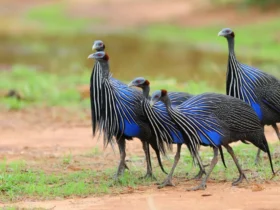In the warm summer months, the skies of Europe come alive with the vibrant hues and graceful flight of the European Bee-Eater (Merops apiaster). With its striking plumage, distinctive silhouette, and captivating behavior, this avian wonder has enchanted birdwatchers and nature enthusiasts for generations. In this article, we will delve into the fascinating world of the European Bee-Eater, exploring its appearance, behavior, habitat, and the remarkable adaptations that make it a true marvel of the avian kingdom.
European Bee-Eater images
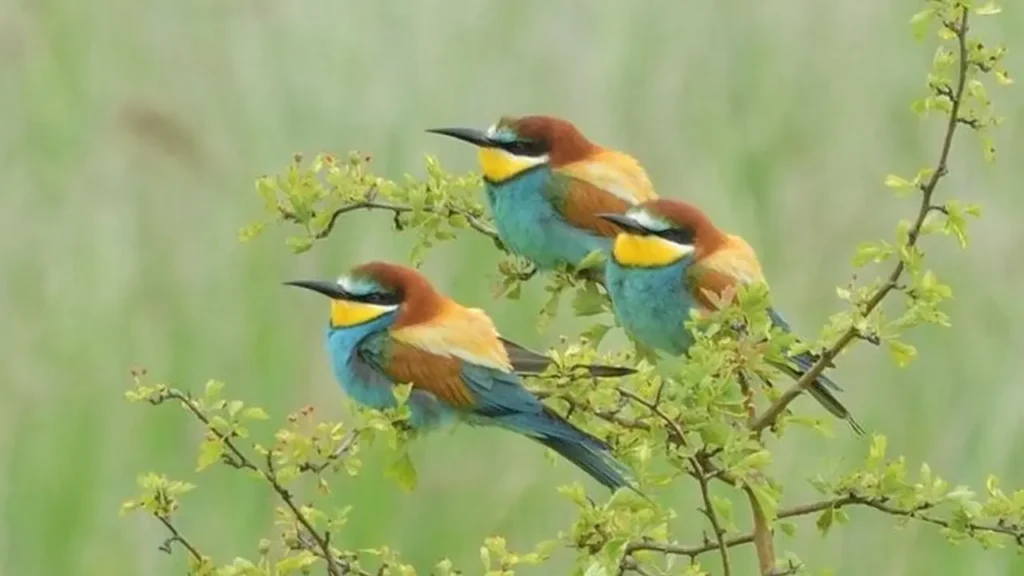
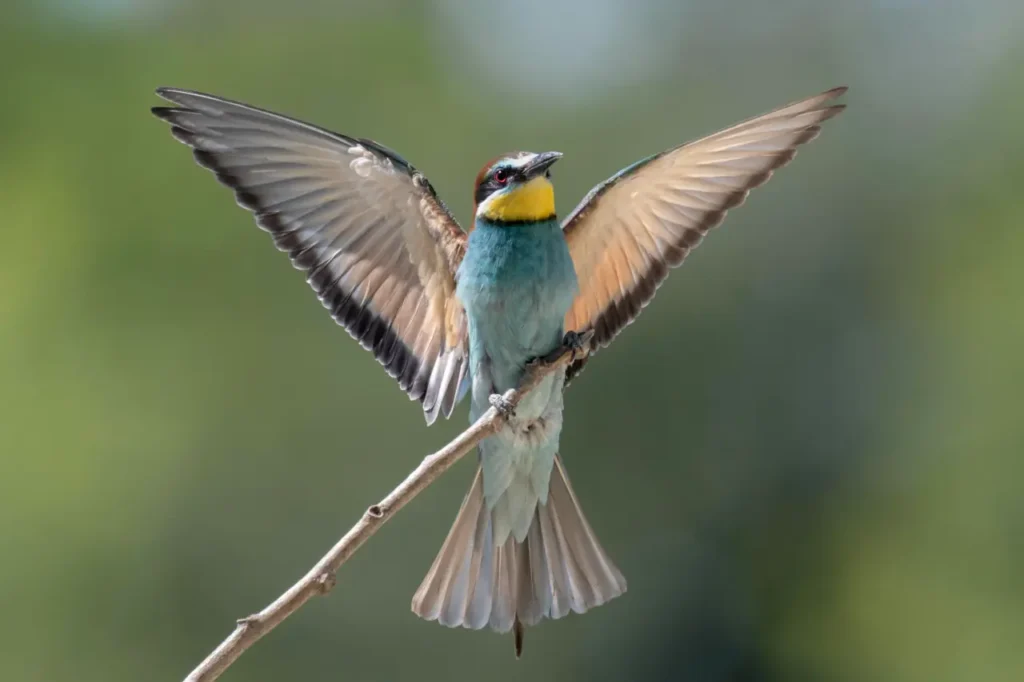
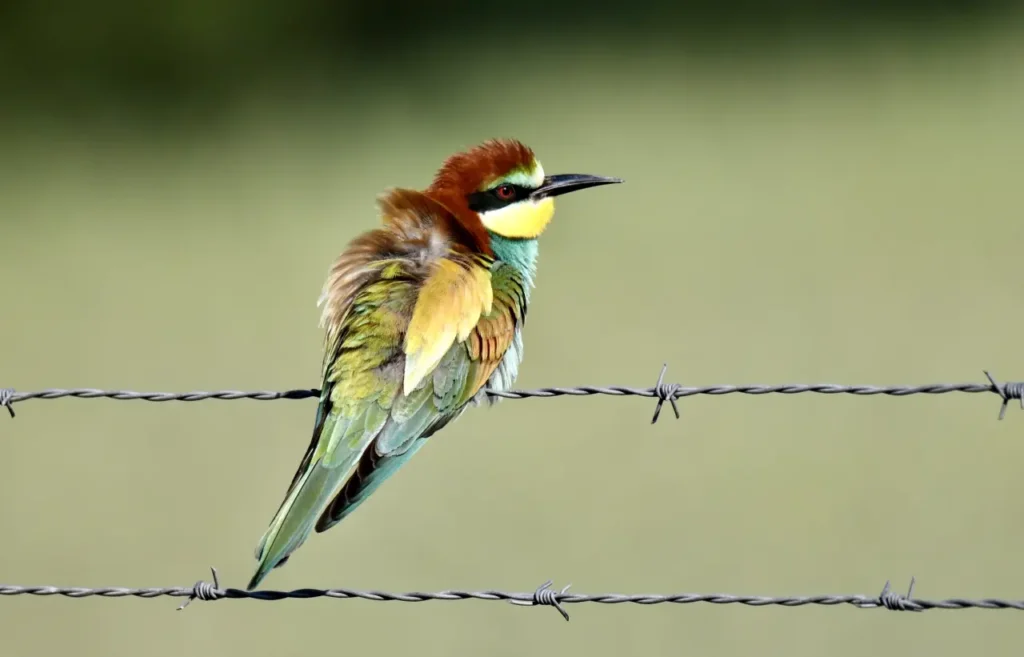
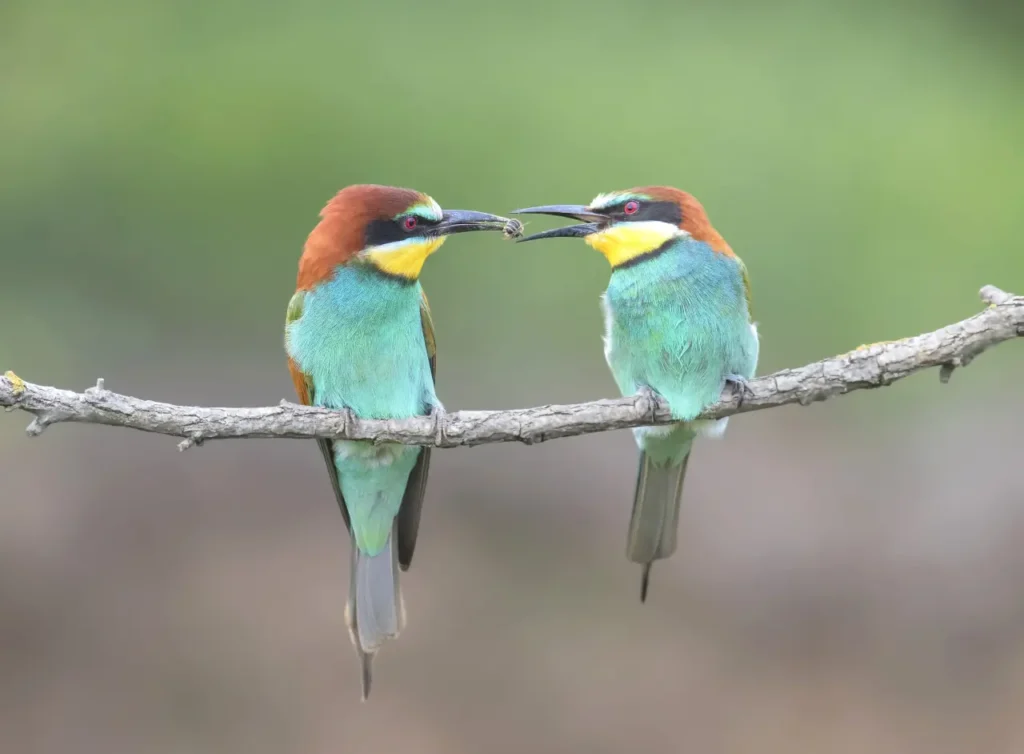
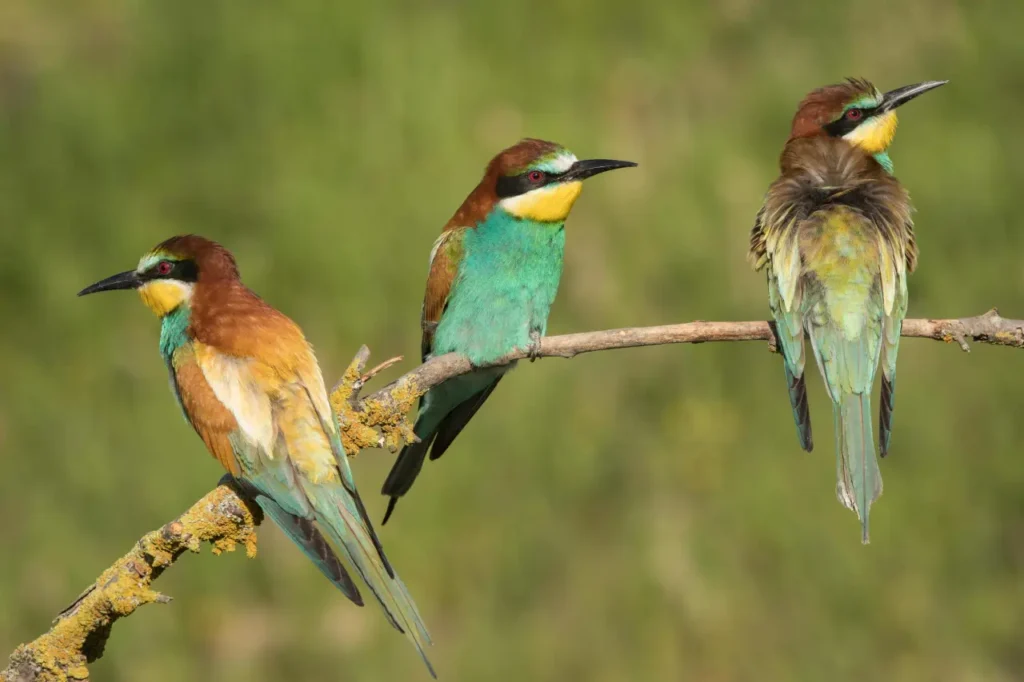
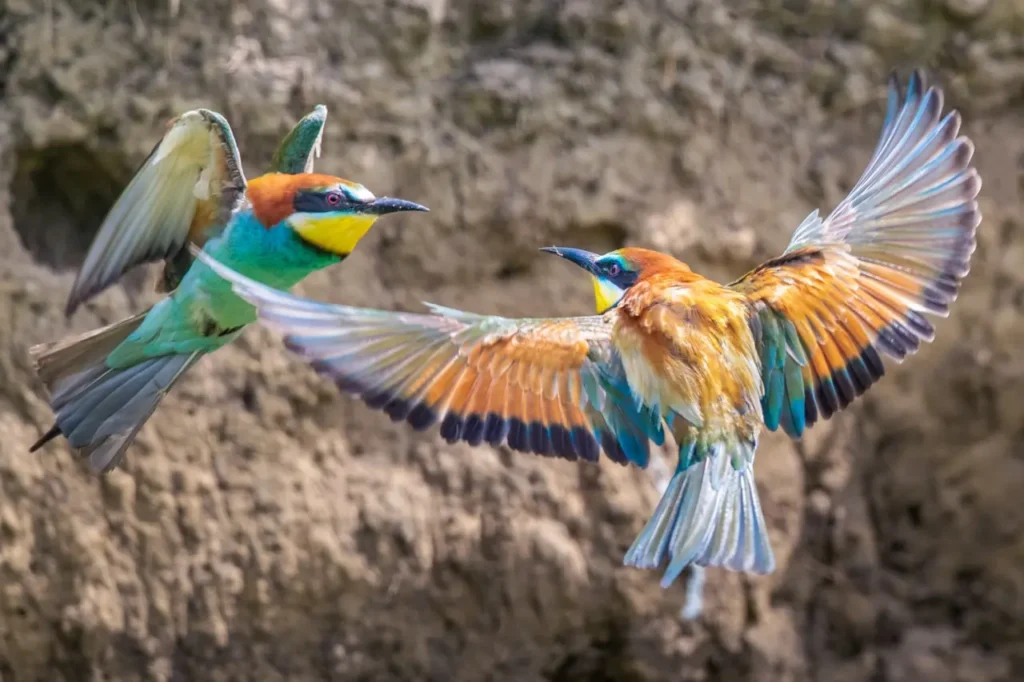
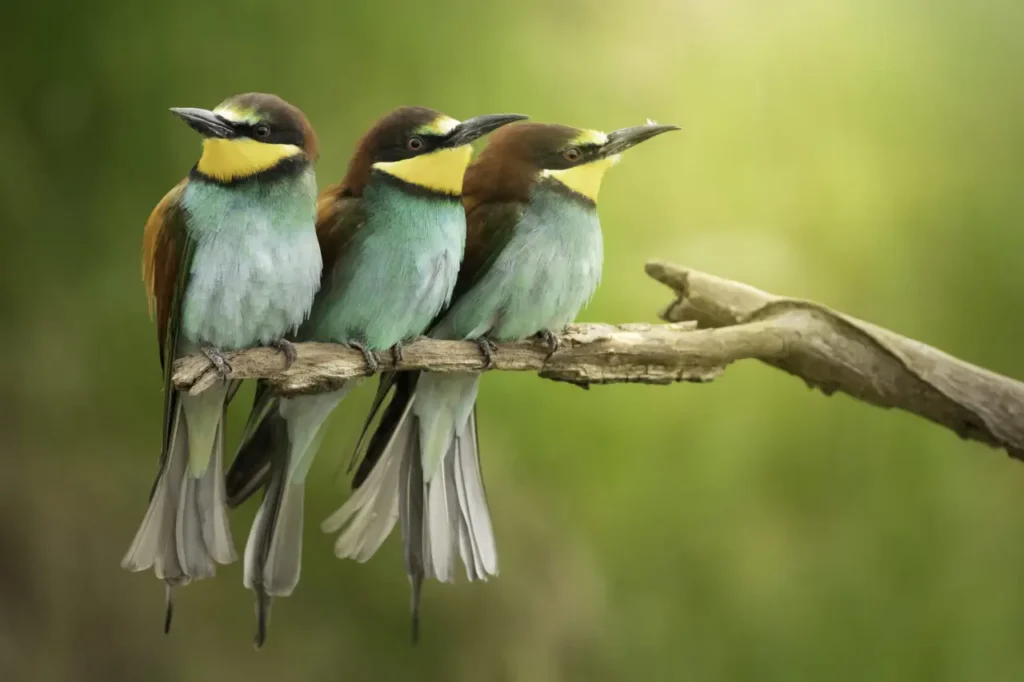
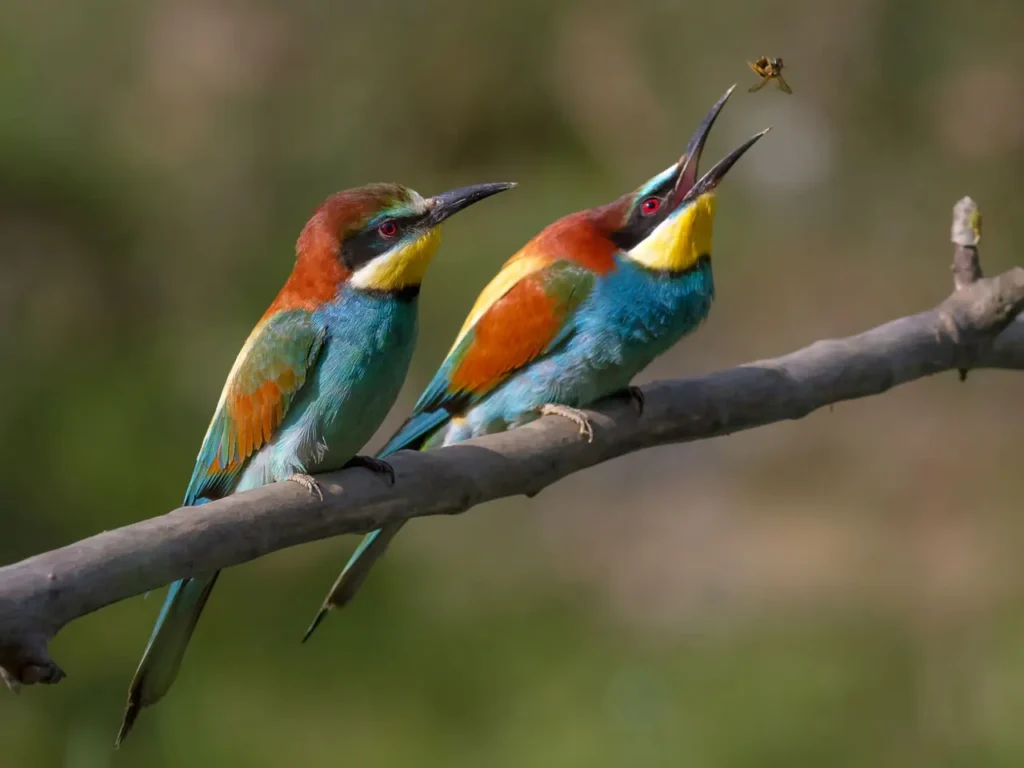
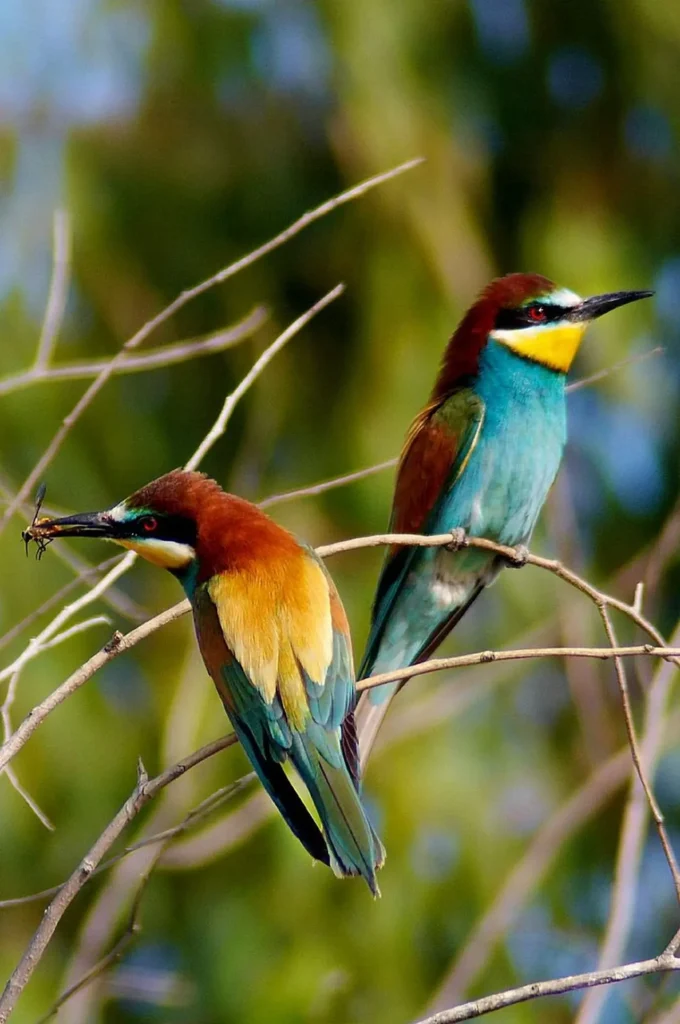
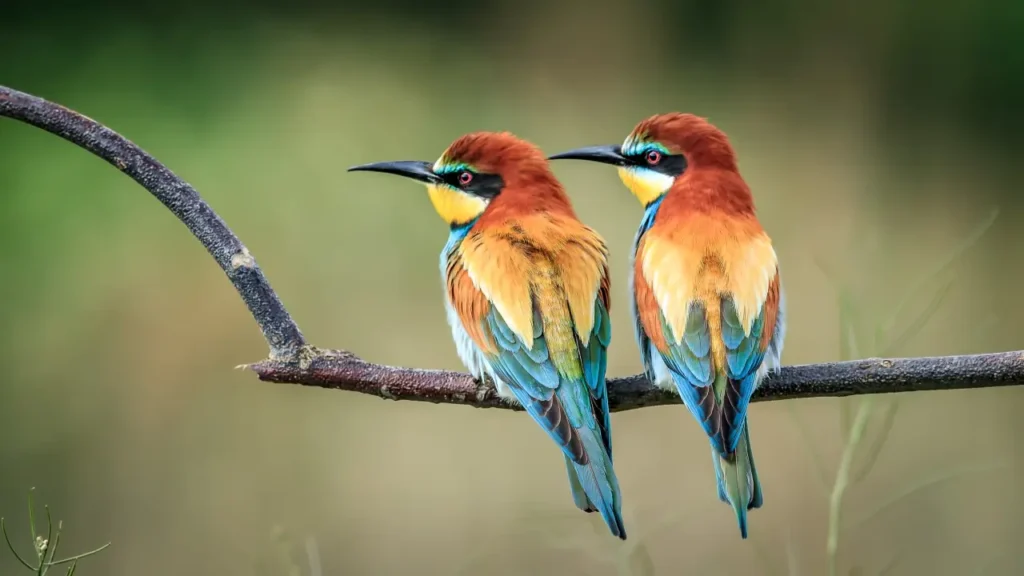
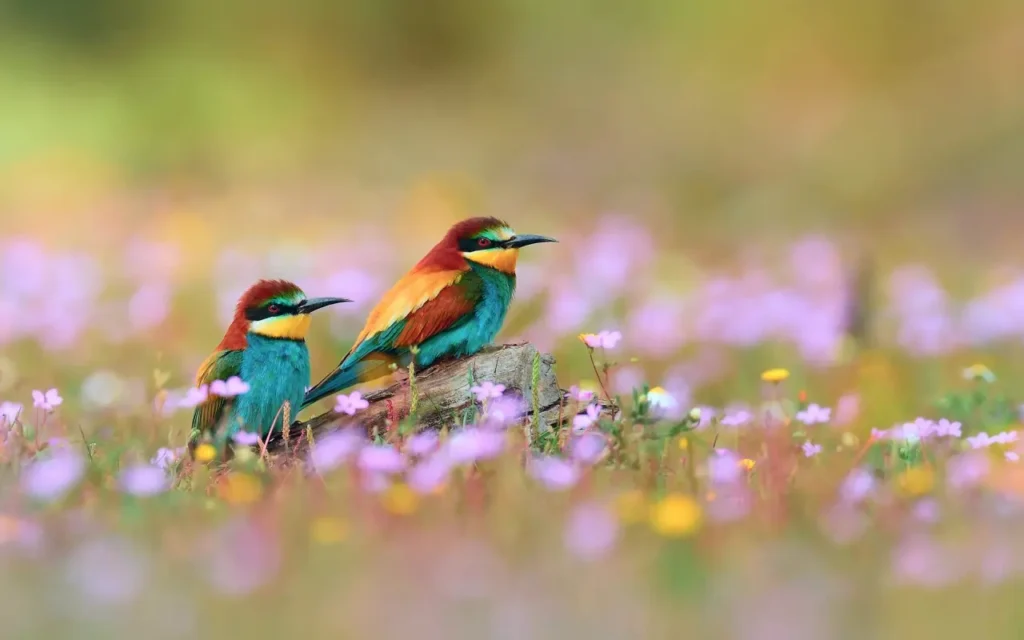
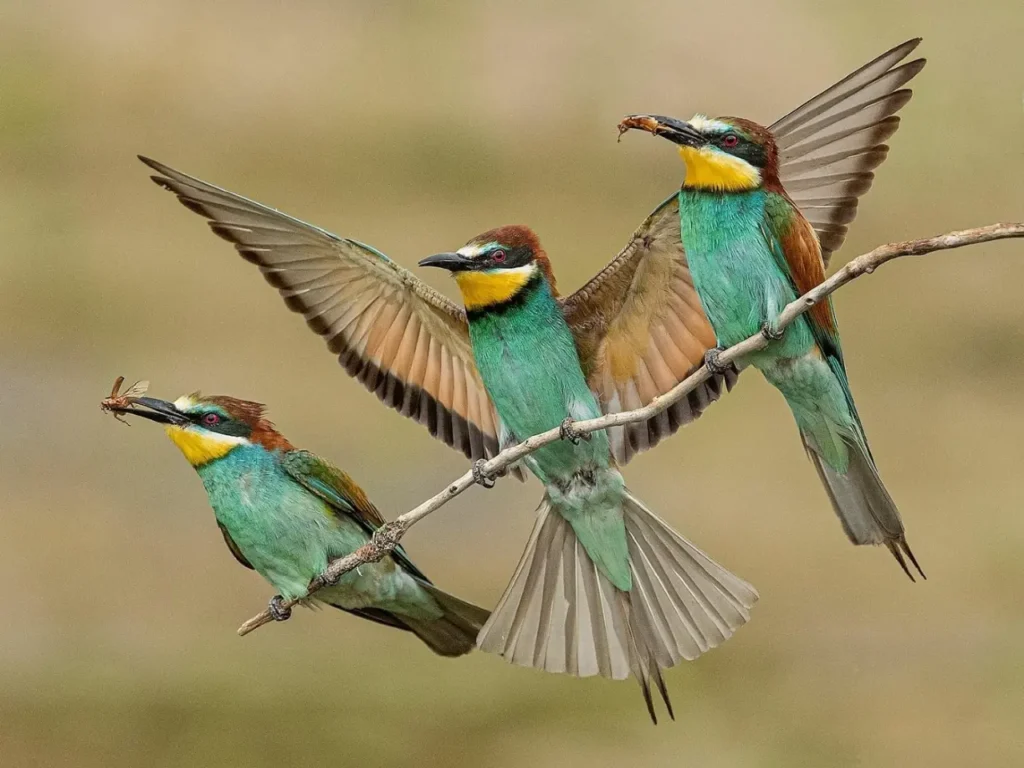
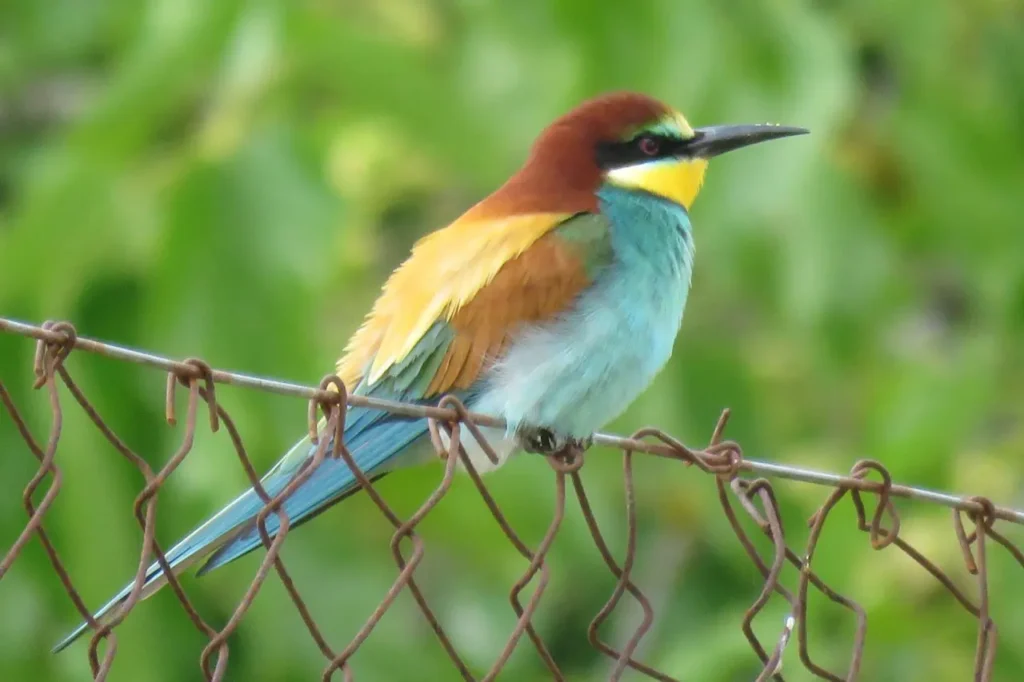
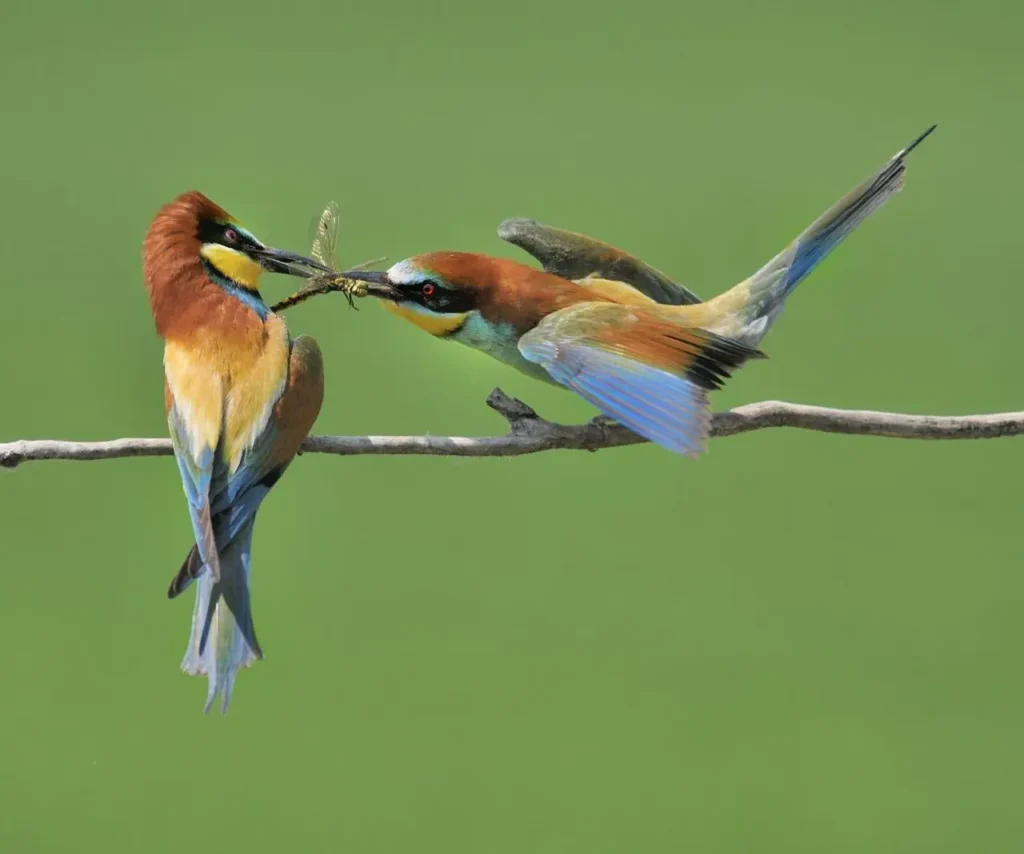
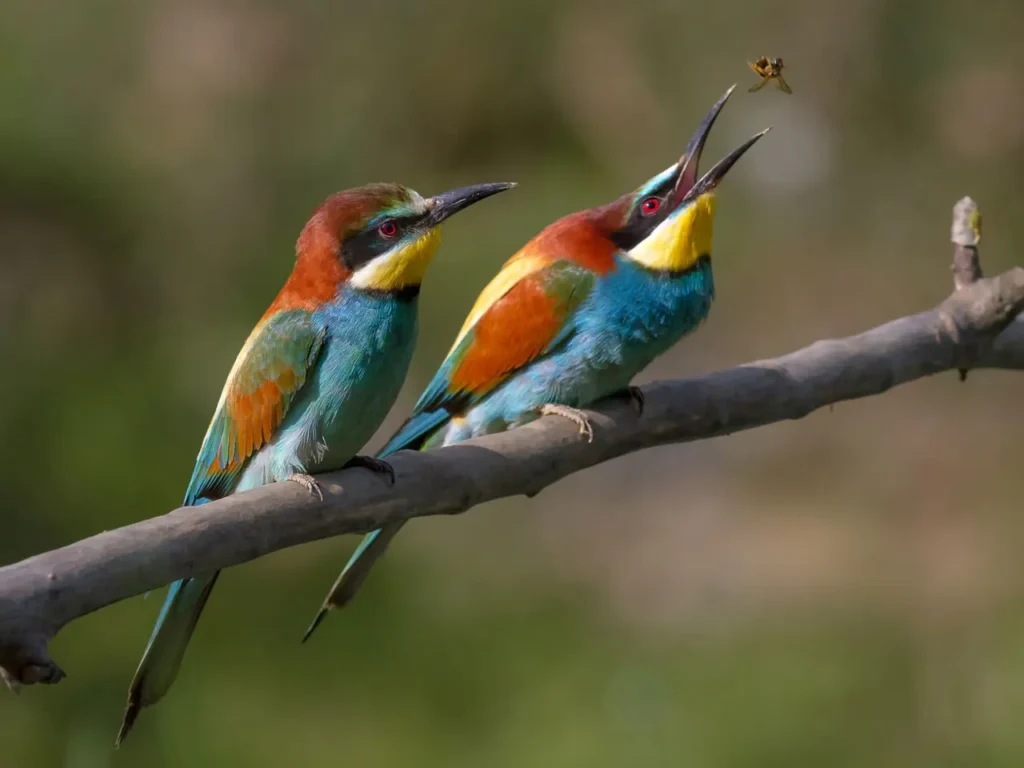
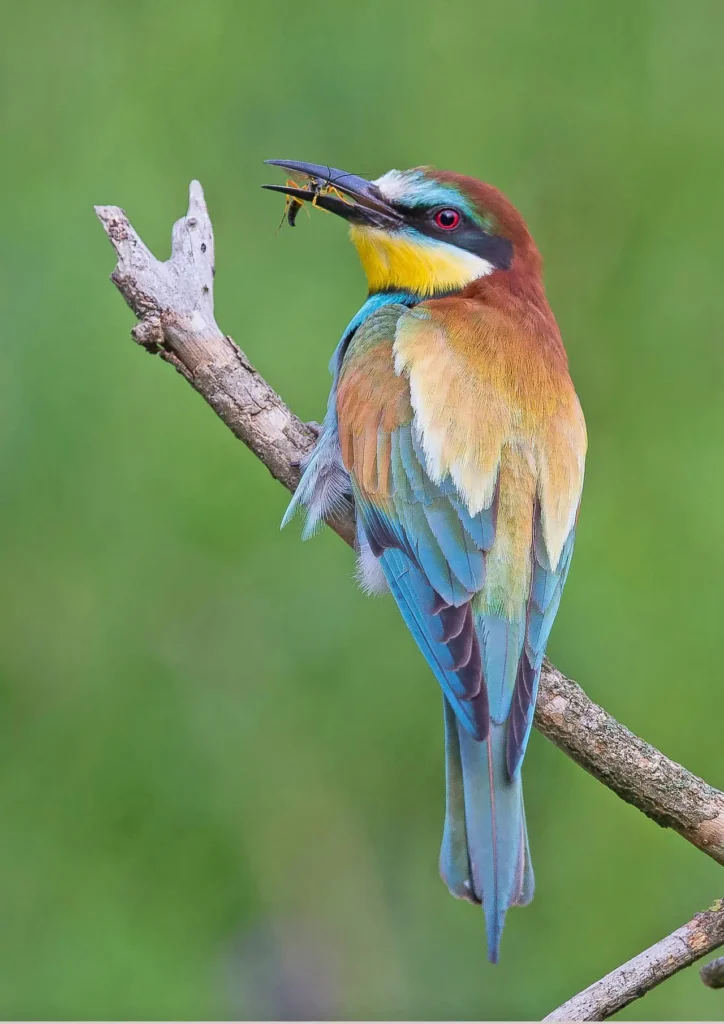
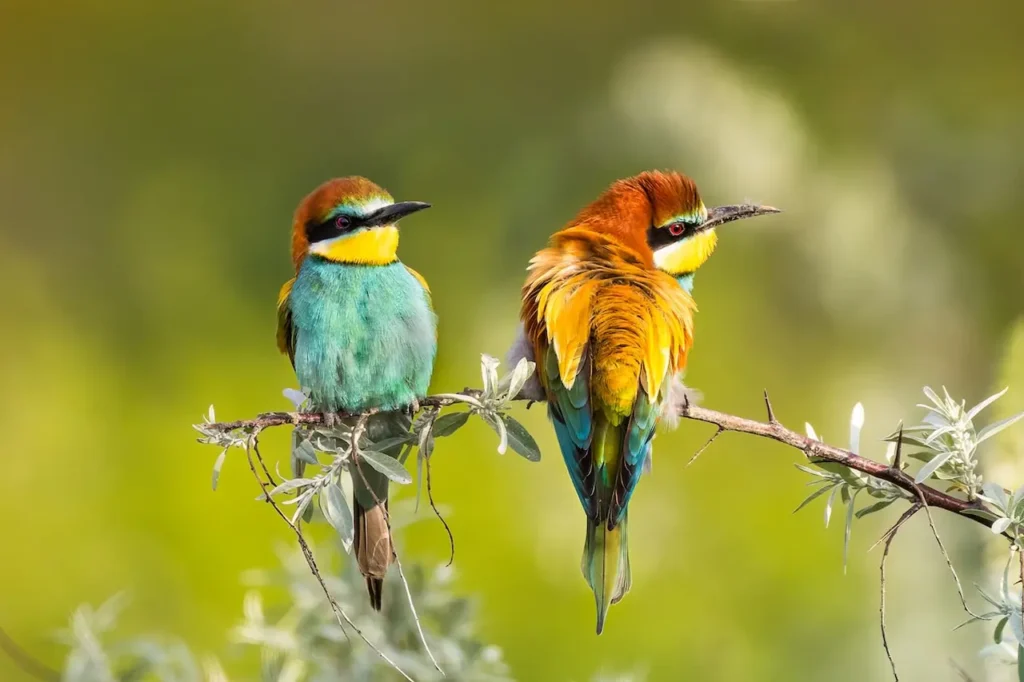
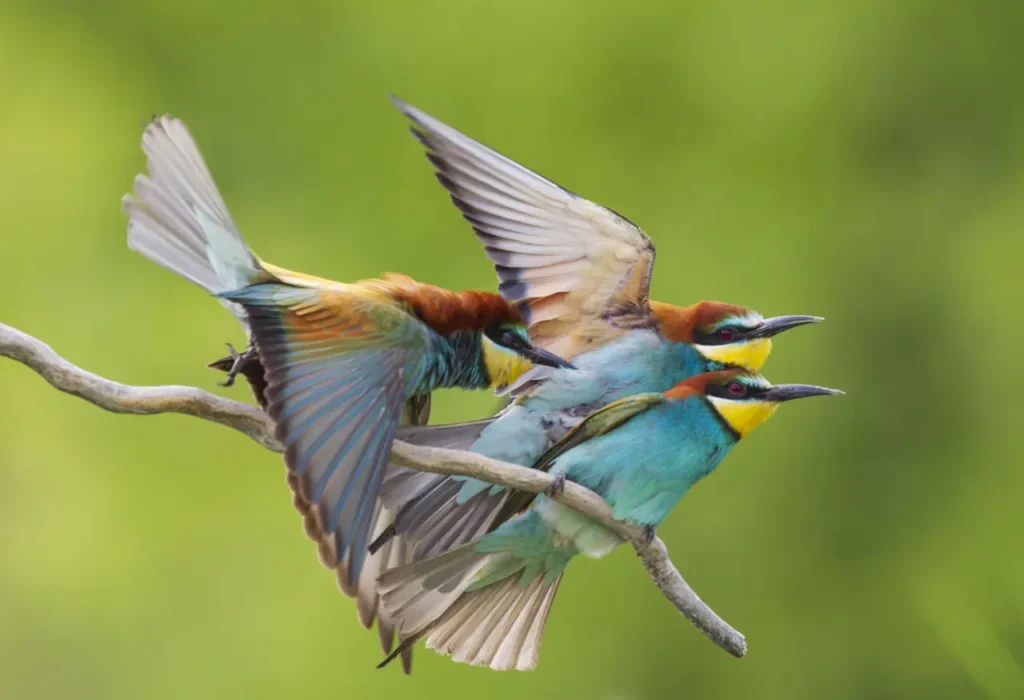
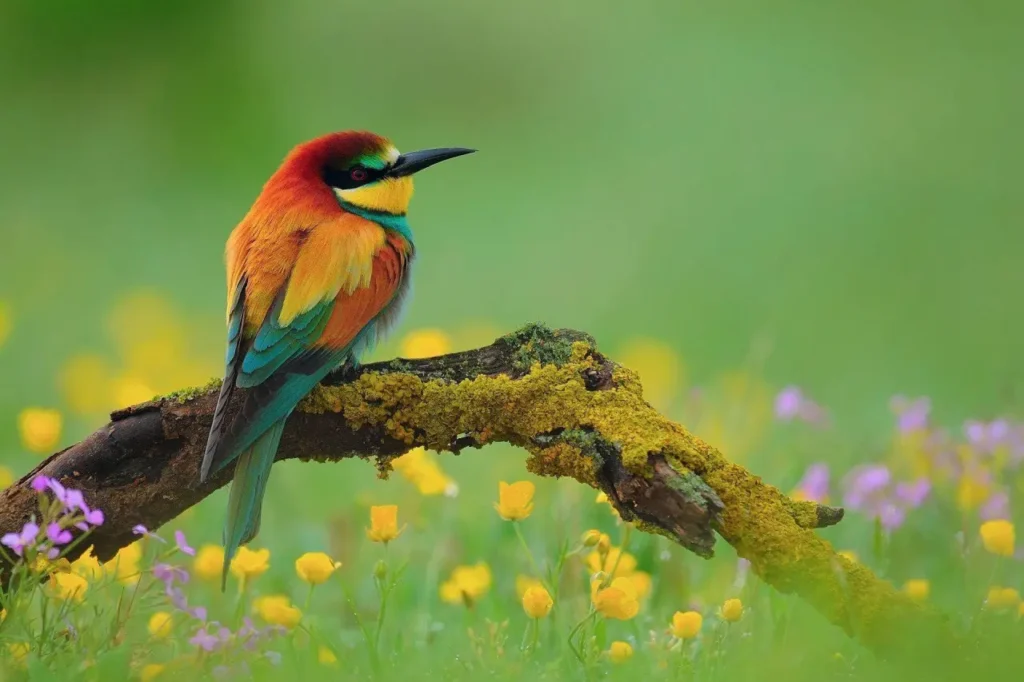
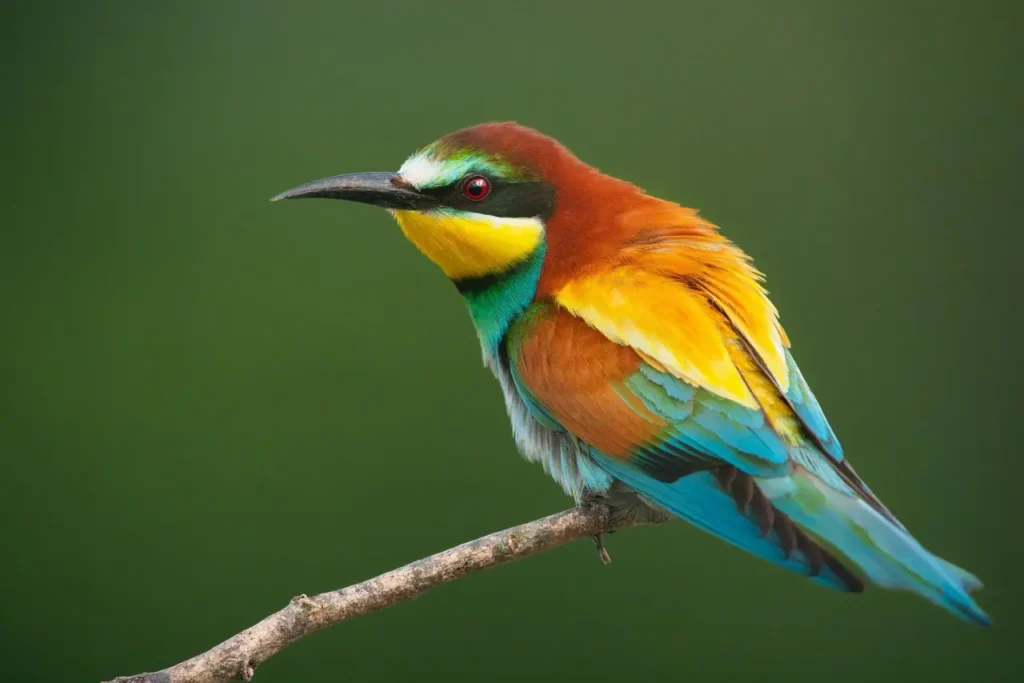
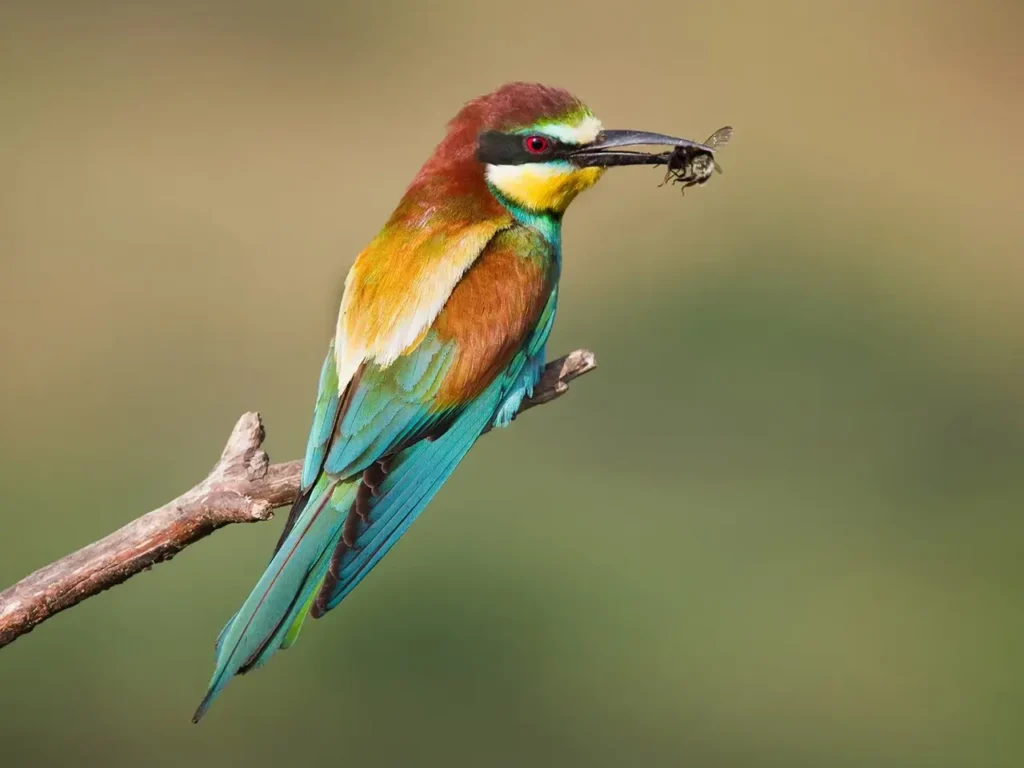
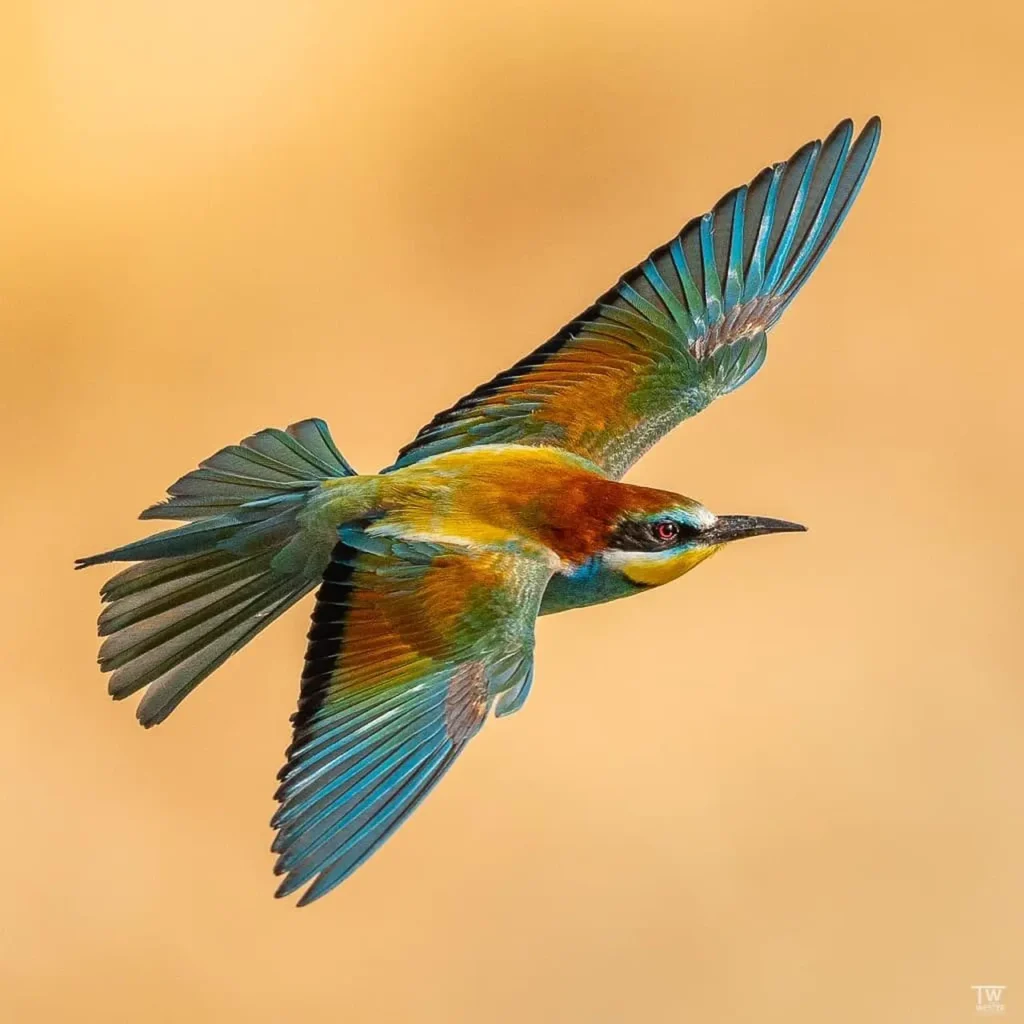
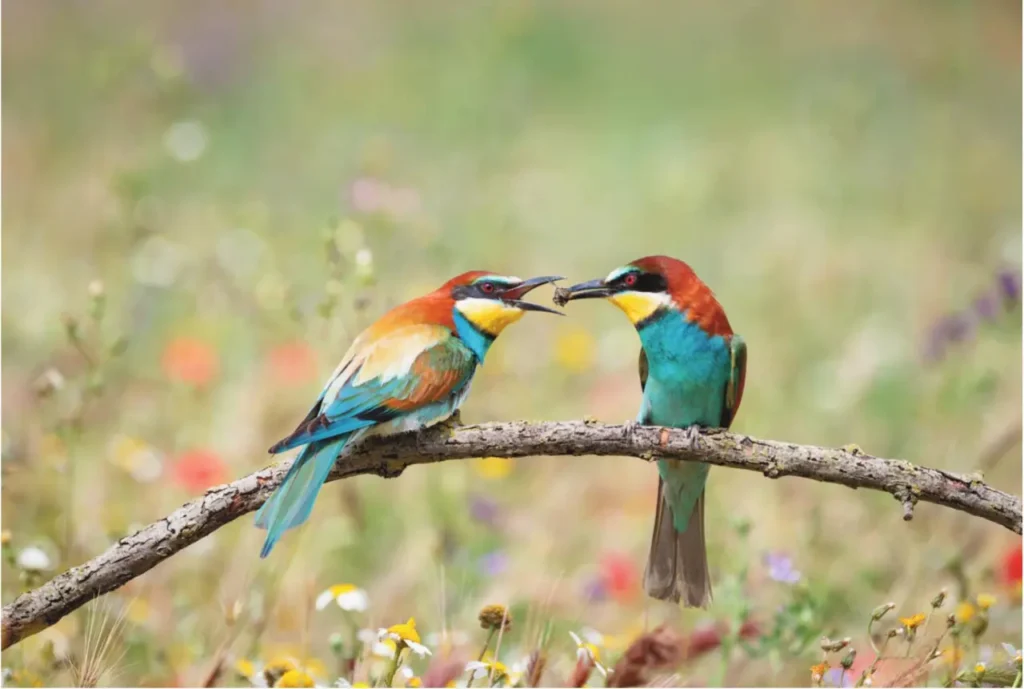
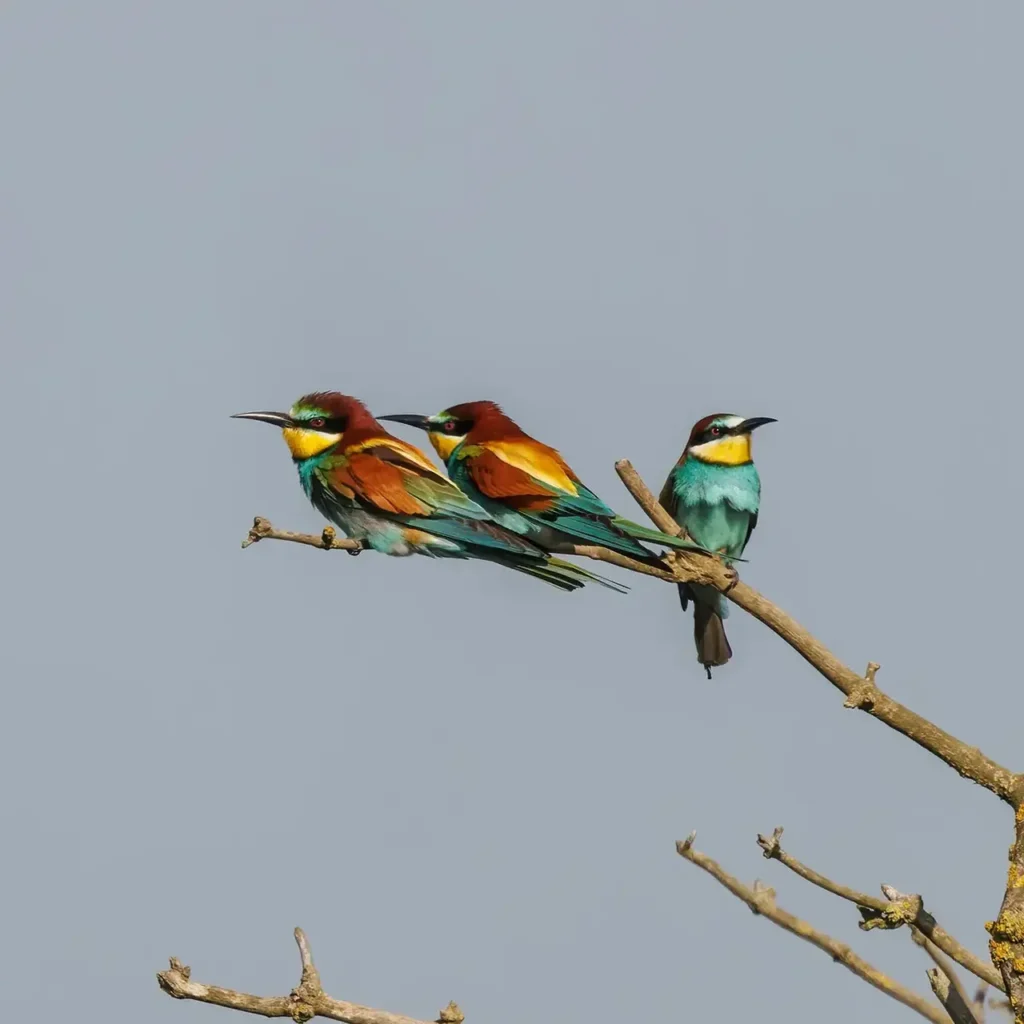
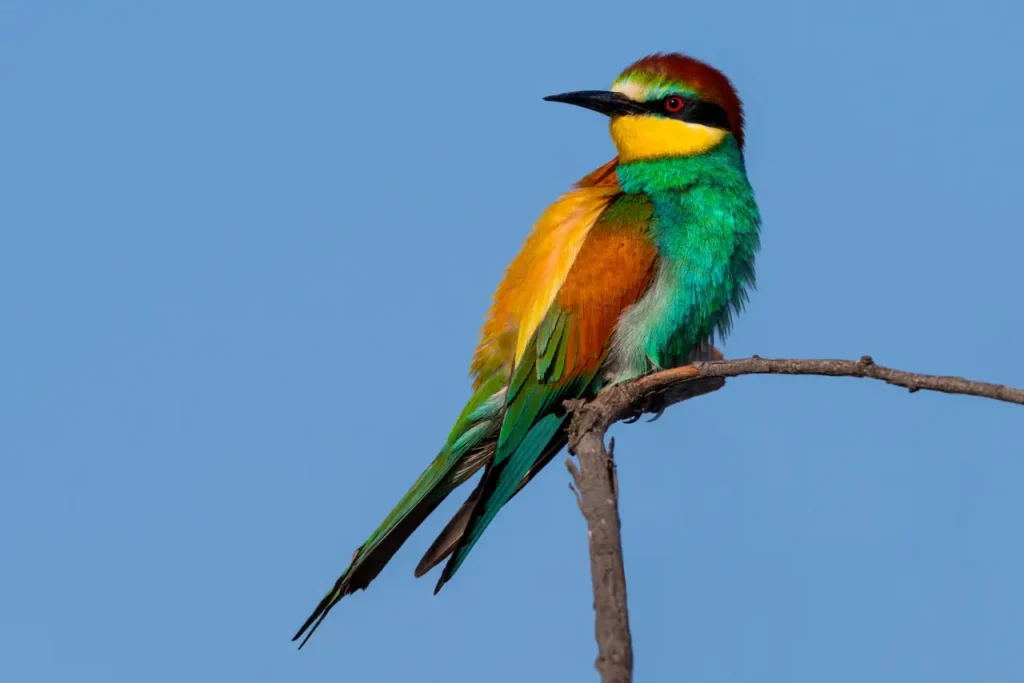
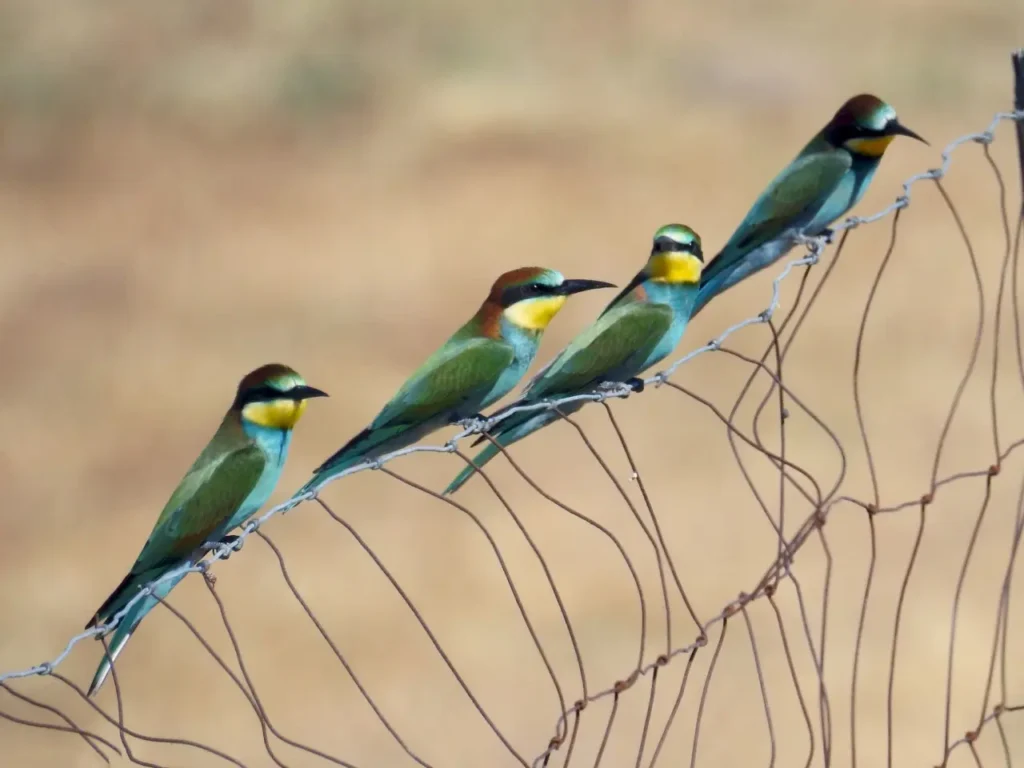
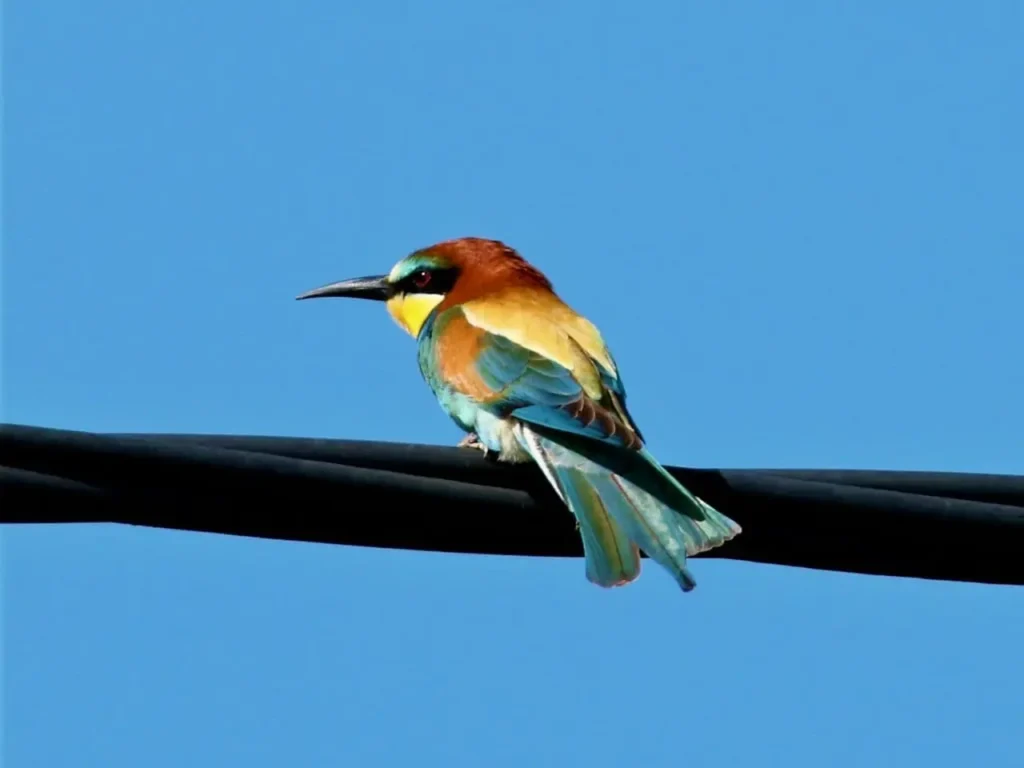
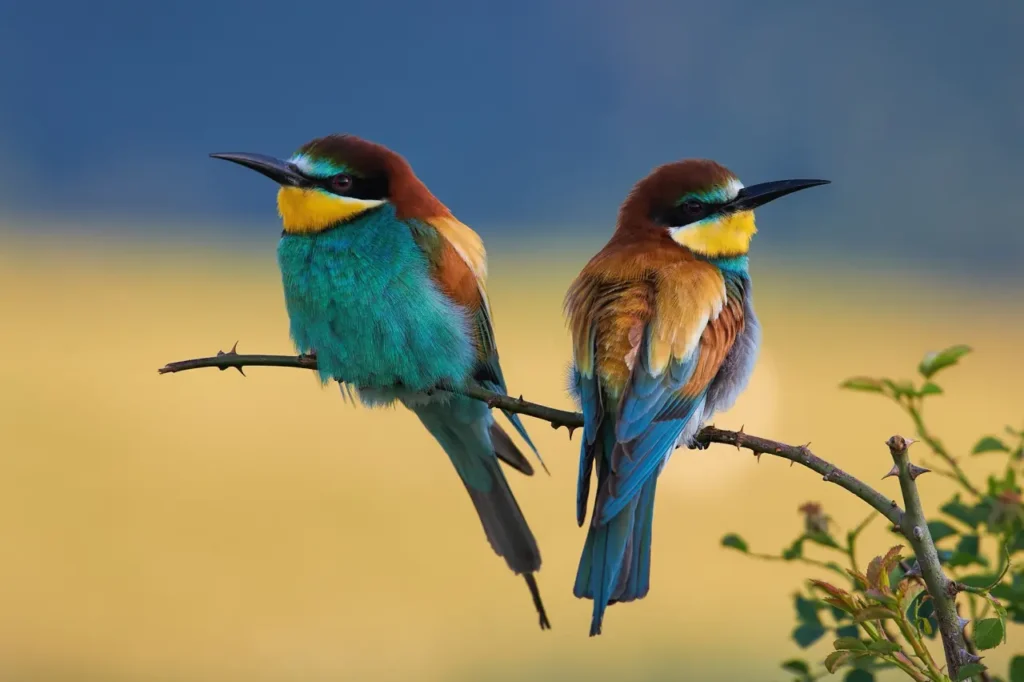
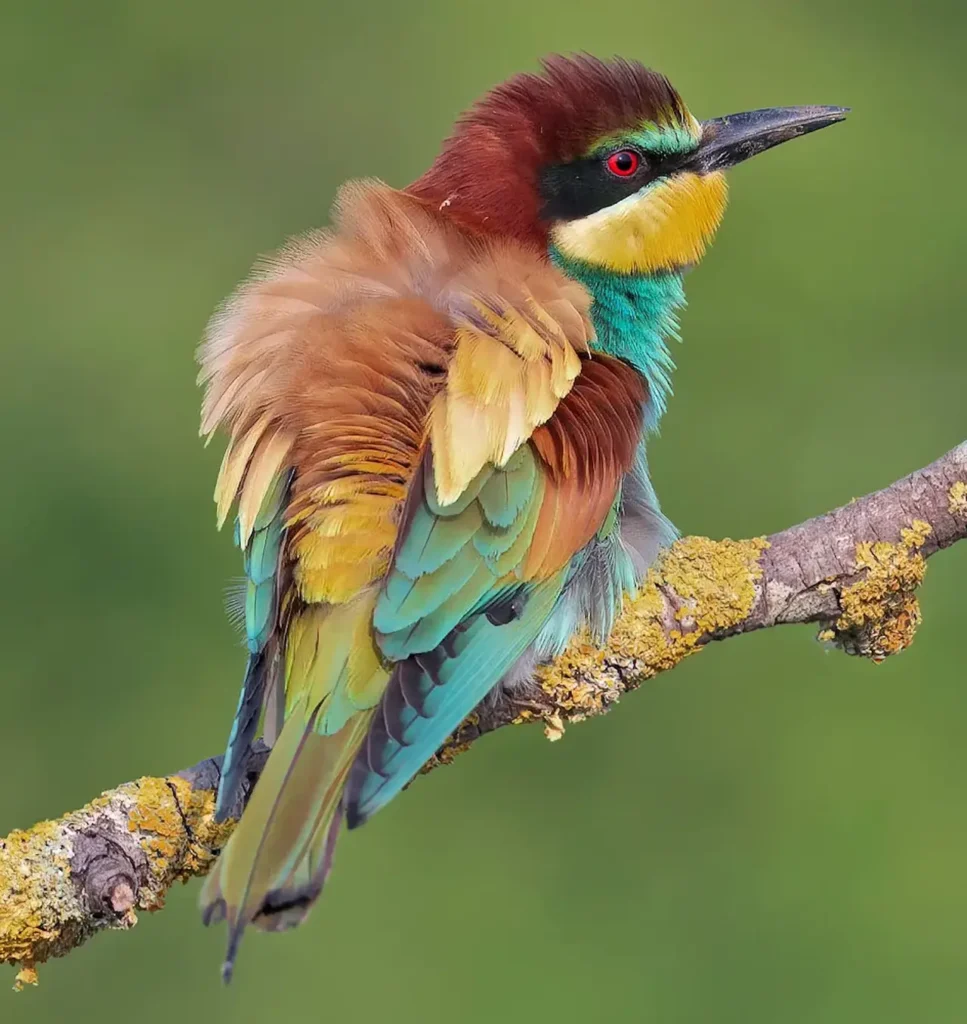
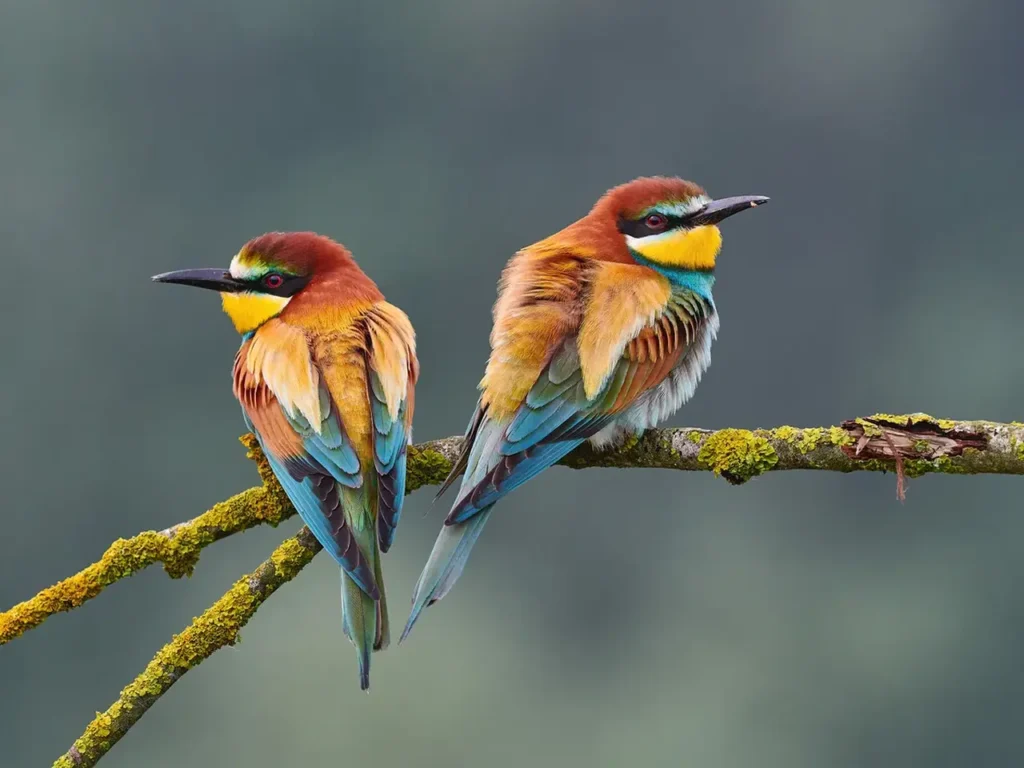
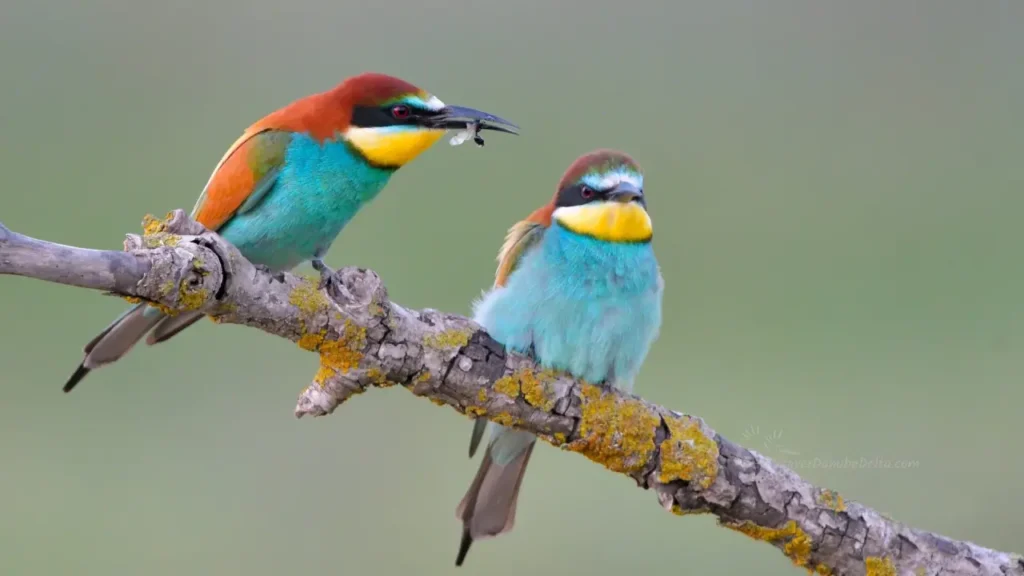
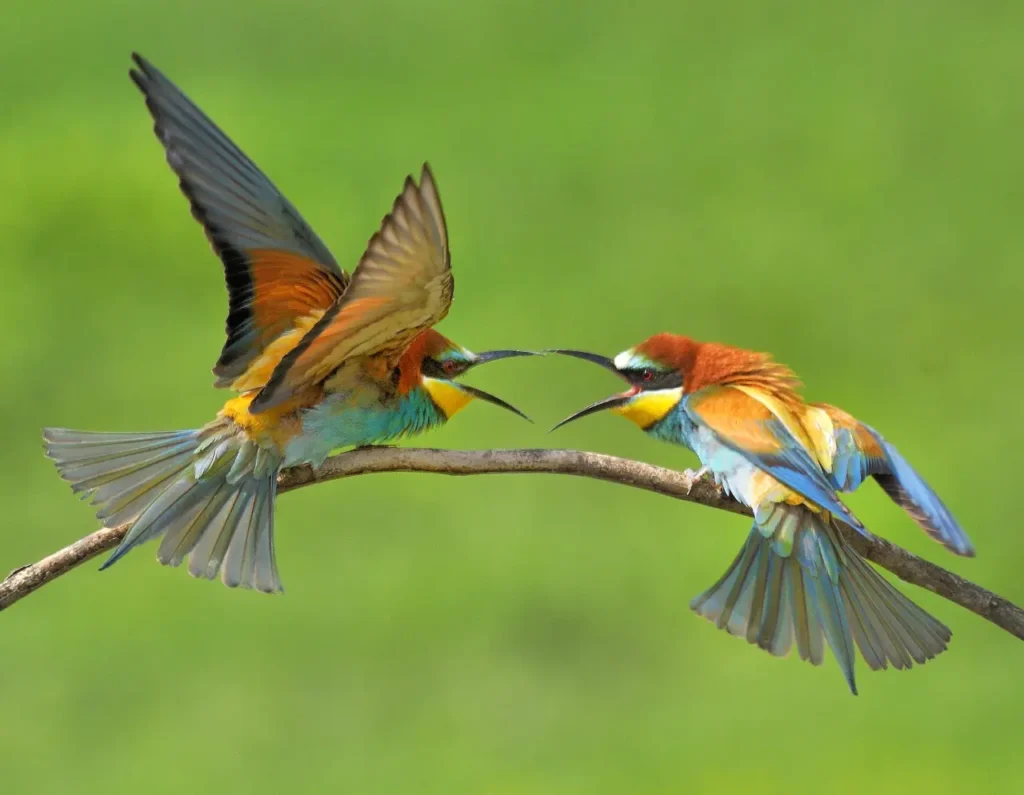
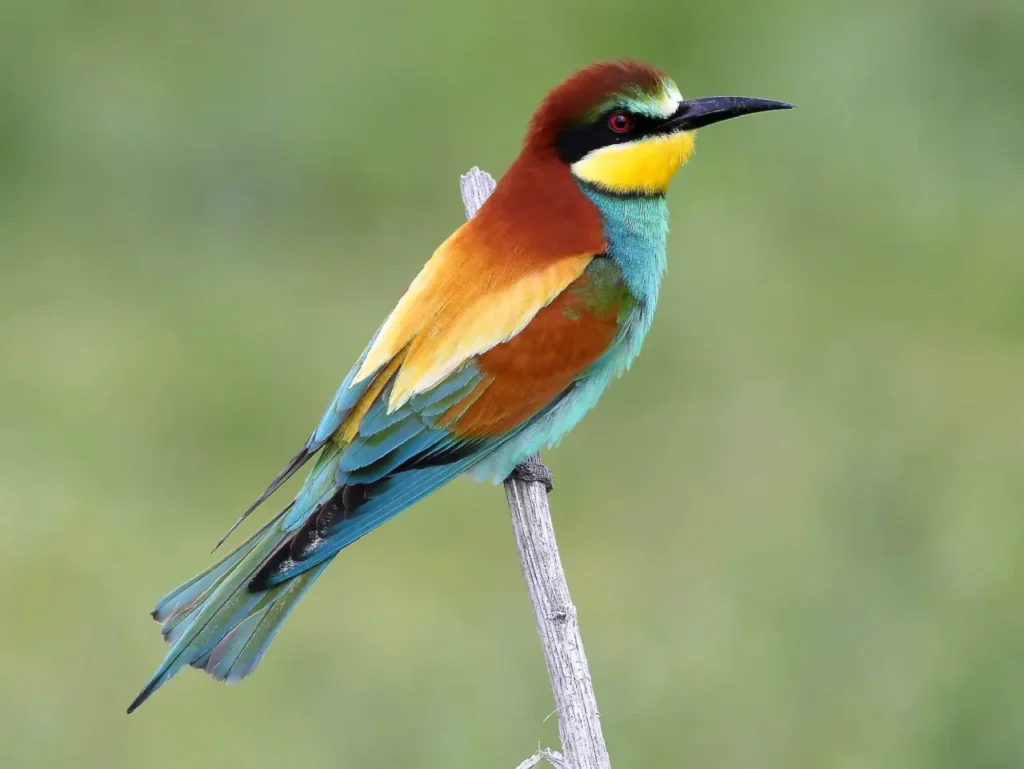
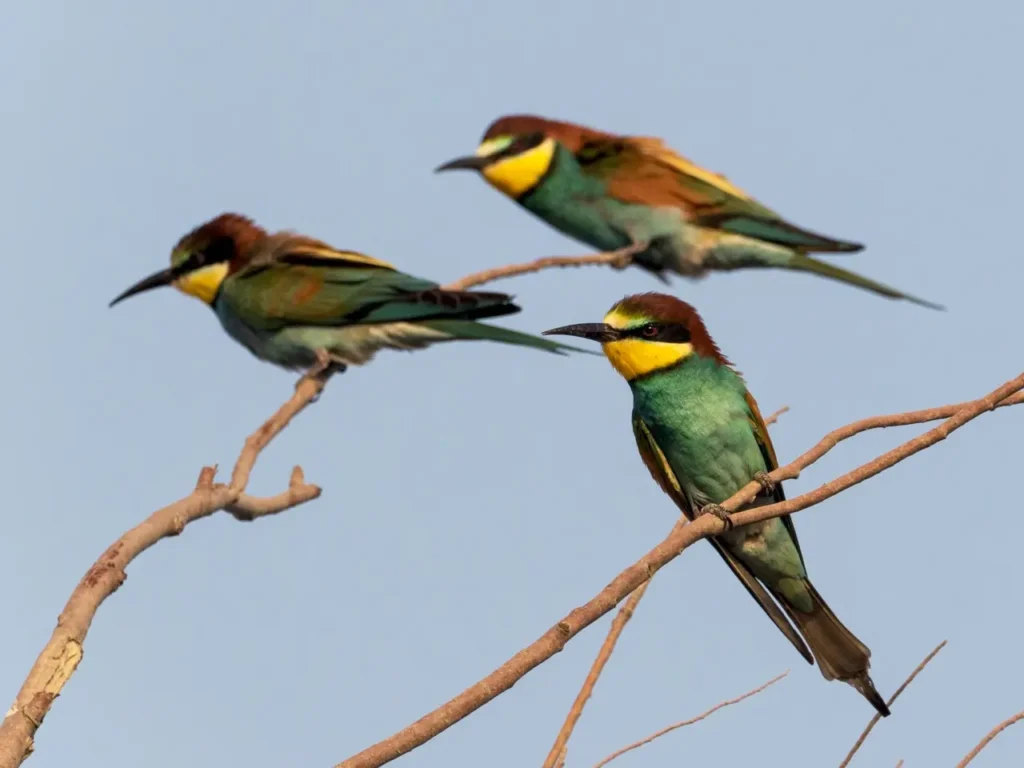
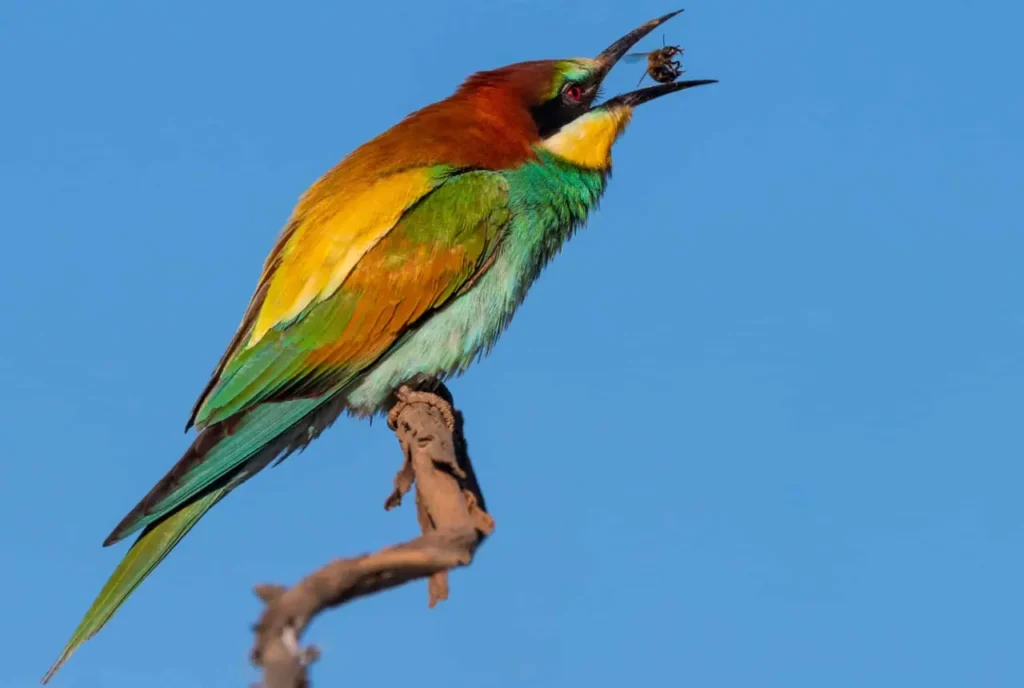
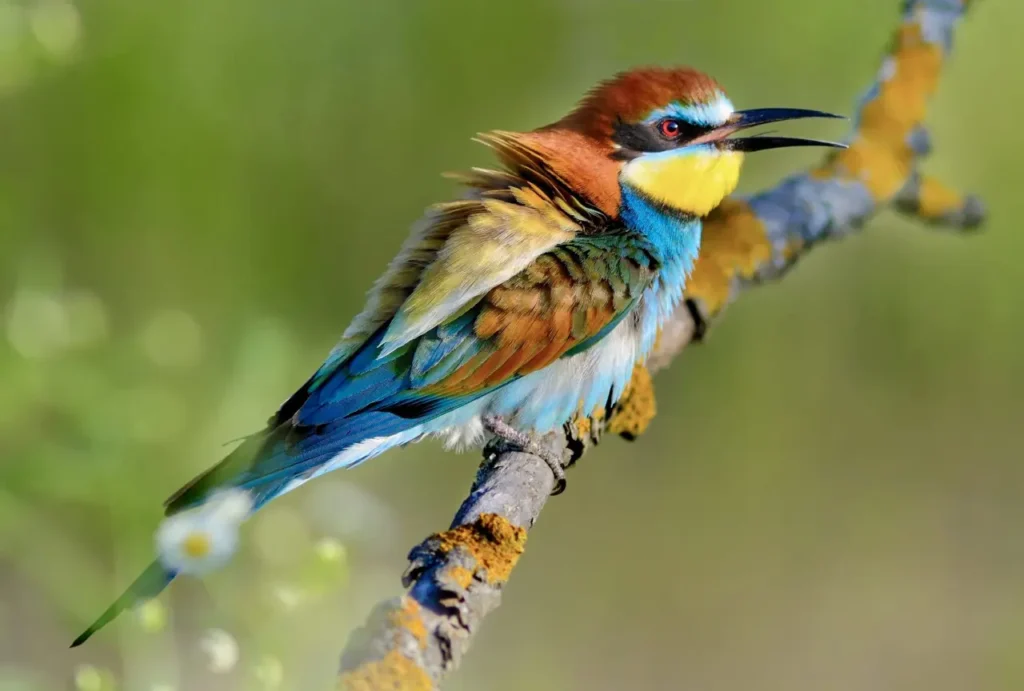
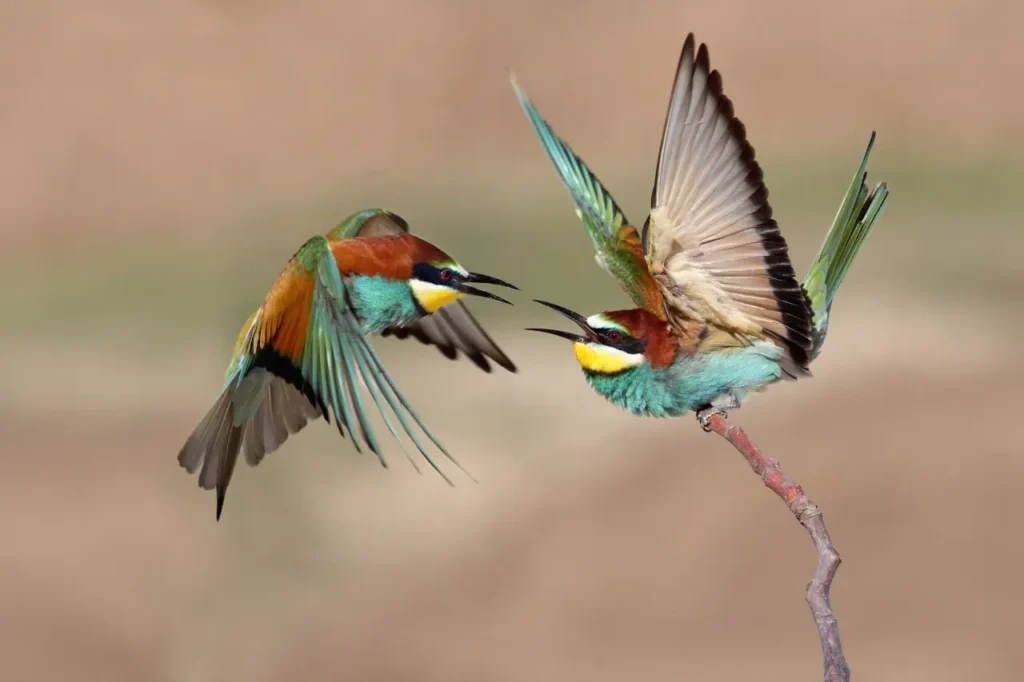
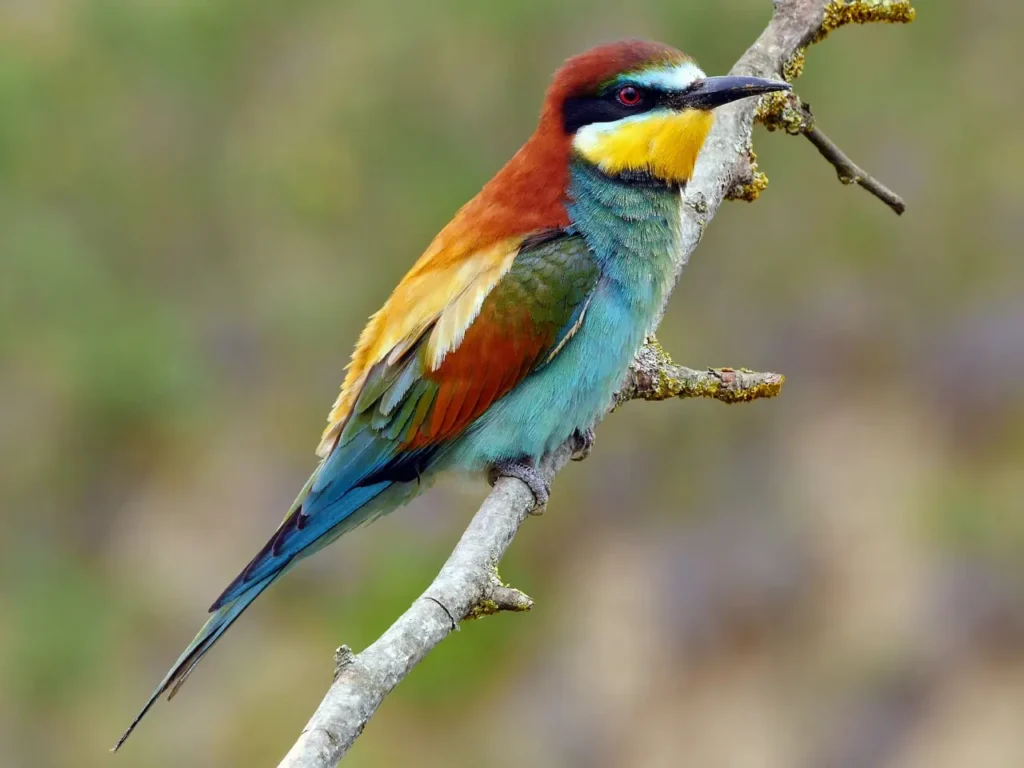
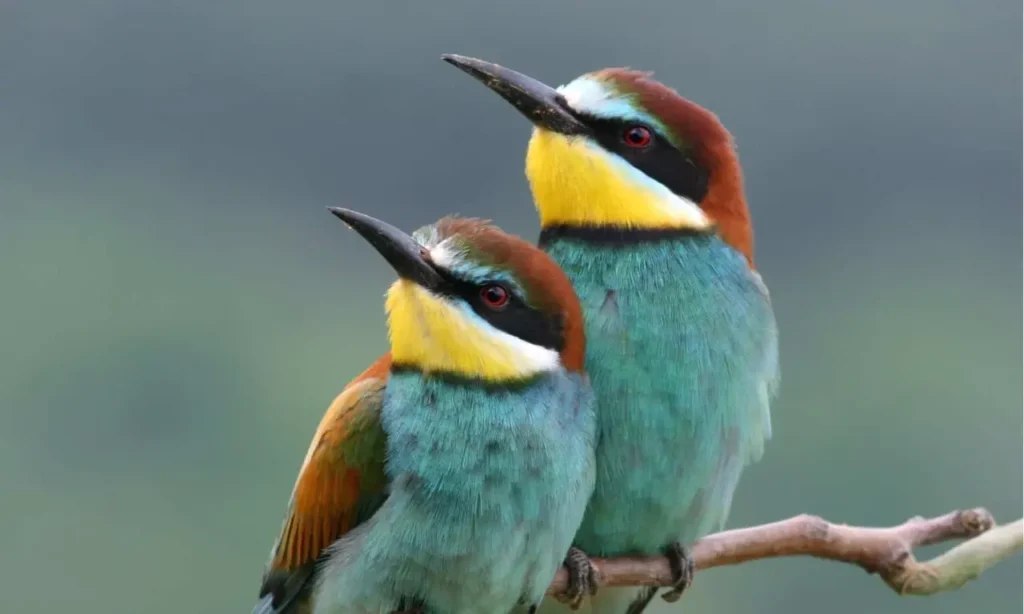
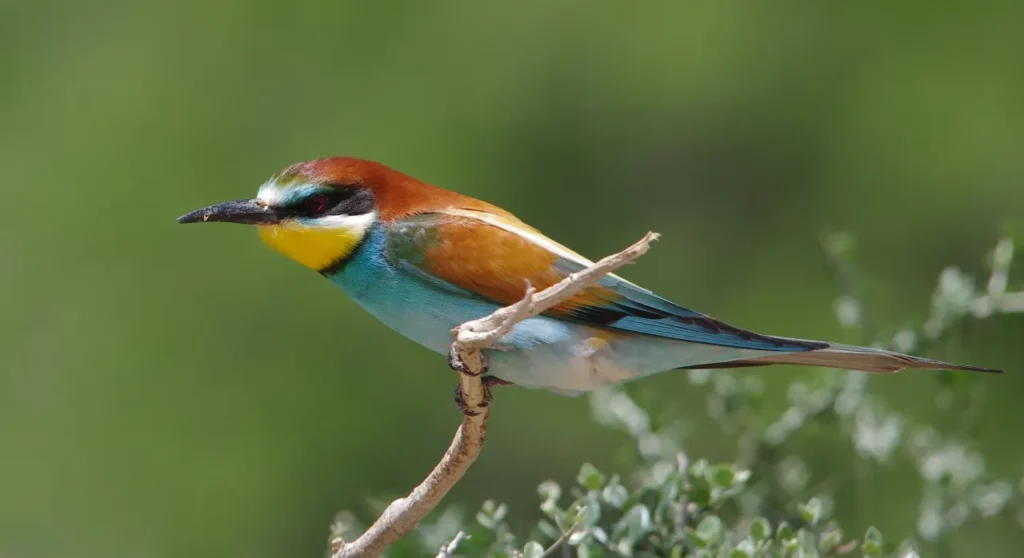
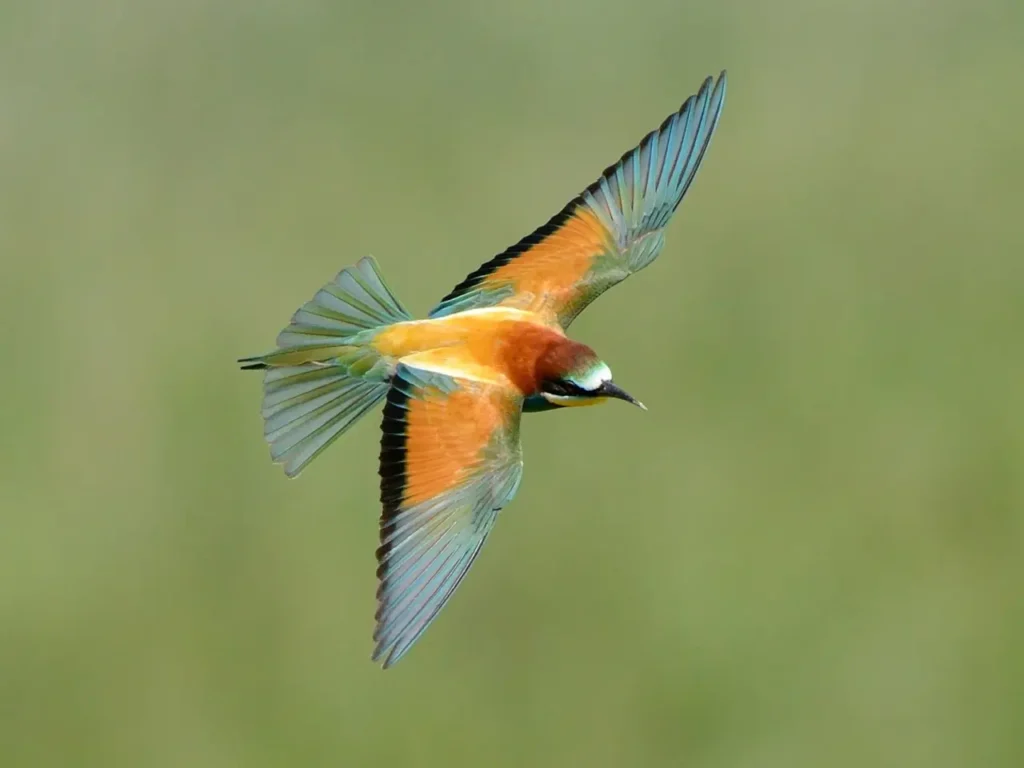
A Tapestry of Colors
The European Bee-Eater is a visual delight, adorned with an exquisite palette of colors. Its crown and nape boast a warm chestnut hue, complemented by a vibrant turquoise-blue back and wings. Its throat and breast display a soft yellow, while its underparts dazzle with a warm reddish-brown shade. This kaleidoscope of colors, combined with its slender and streamlined body, creates an eye-catching spectacle as it soars through the sky.
Aerial Acrobatics and Hunting Techniques
Known for its exceptional aerial skills, the European Bee-Eater is a master of flight and precision. These birds spend a considerable amount of time on the wing, gracefully gliding, twisting, and turning through the air. Their long and pointed wings enable them to perform acrobatic maneuvers with ease. They hunt insects, primarily bees, wasps, and flying ants, employing a unique technique known as “hawking.” The European Bee-Eater spots its prey from the air, swiftly descending to capture it with its long, slender bill. To deal with the stingers of bees and wasps, the bird skillfully removes them by rubbing the prey against a perch before consuming it.
Breeding and Social Behavior
During the breeding season, European Bee-Eaters form colonies and engage in elaborate courtship displays. Males perform aerial displays, showcasing their vibrant colors and calling out with a distinctive trilling sound. They also present gifts of food to the females, symbolizing their ability to provide. Once a pair forms a bond, they excavate a nesting burrow in soft or sandy soil, often located near rivers or open landscapes. The female lays a clutch of 5 to 8 eggs, and both parents take turns incubating them until they hatch. The cooperative effort of raising the young continues, with both parents feeding and caring for the chicks.
Habitat and Migration
European Bee-Eaters are migratory birds, spending their winters in sub-Saharan Africa and returning to Europe for the breeding season. They prefer open habitats, such as grasslands, farmlands, and wetlands, where insect populations are abundant. These birds are often found near water bodies, as they provide a valuable source of mud for nest construction and act as insect-rich foraging grounds.
Conservation and Environmental Significance
While the European Bee-Eater population is currently stable, these birds face threats that require conservation attention. Habitat loss due to agricultural intensification, deforestation, and urbanization poses significant risks. Additionally, pesticide use can impact insect populations, reducing the availability of prey. Conservation efforts focused on preserving suitable habitats, raising awareness about the importance of insect biodiversity, and implementing sustainable farming practices can help secure the future of these remarkable birds.
The Song of Summer
The European Bee-Eater is more than just a beautiful bird. Its presence in the European landscape signifies the arrival of summer, with its vibrant colors and melodic calls adding to the soundscape of the season. As we witness the aerial displays and marvel at their adaptations, let us cherish and protect the habitats that support these stunning creatures, ensuring their continued presence for generations to come.
The European Bee-Eater exemplifies the elegance and grace found in nature’s avian wonders. With its captivating colors, aerial acrobatics, and unique hunting techniques, this bird serves as a reminder of the beauty and intricacy of the natural world. By appreciating and safeguarding the habitats that sustain them, we can ensure that future generations will have the opportunity to witness the stunning displays and melodious calls of the European Bee-Eater, a true symbol of summer’s arrival.
